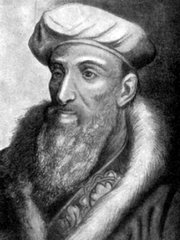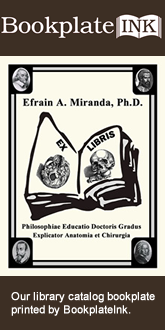This article is part of the series "A Moment in History" where we honor those who have contributed to the growth of medical knowledge in the areas of anatomy, medicine, surgery, and medical research.

Bartolomeo Eustachius
Bartolomeo Eustachius (c1500 - 1574) Italian physician and anatomist, also known as Bartholomew Eustachius, Esutachi, and e was born in the small town of San Severino Marche, in the province of Macerata, central Italy. His father was a respected physician, and may have attended as a student the University of Sapienza, where he later taught as a professor of practical medicine. Eustachius’ life is mostly unknown and some of his works remained hidden for over 150 years. His birth date is only an estimate and data varies from c1500 AD to c1510 AD.
It is known that Eustachius lived and worked in Rome from 1549 to 1574. He was both an anatomist and a physician to the Vatican. As an anatomist, Eustachius is credited for having been the first to prepare anatomical images for printing using copper plates.
As a hospital physician, Eustachius was adamant on the need of autopsies on patients who died at the hospital, crediting him with being one of the first pathological anatomists.
Eustachius’ is credited with several anatomical discoveries, which he published in short monographs, on topics like the kidneys, the suprarenal glands (which he was the first to describe), the movements of the head, the azygos vein, etc. One of these was entirely dedicated to dentistry, “Libellus de Dentibus”, which have led to some to call Eustachius “The Father of Dental Anatomy”.
Eustachius dedicated himself to prepare a number of anatomical copper plates, apparently getting ready to publish a book to rival Vesalius’ “Fabrica”. It is known that Eustachius disliked Vesalius because of Vesalius’ contempt for the teachings of Galen. Eustachius died before completing his work and the copper plates were forgotten for over a century. After being rediscovered, these plates were published with commentaries by anatomists, until a final publication in Latin by Bernard Siegfried Albinus (1697 – 1770) entitled “Explicatio Tabularum Anatomicarum Bartholomaei Eustachii Anatomici Summi” (An explanation of the Anatomical Picture of Bartholomew Eustachius, Supreme Anatomist”.
Besides the suprarenal gland, Eustachius is credited for having discovered the stapes, the tensor tympani muscle, the valve of the inferior vena cava, the cervical sympathetic chain and the thoracic duct.
Interesting note: Eustachius’ assistant Petrus Matthaeus Pinus, who helped develop the copper plates, voiced his master’s dislike of Vesalius in a poem that was published by Albinus over a hundred years after the death of all of them, it is also an epitaph for a great anatomist:
“Just as the Master from Pergamon (Galen)
Teaching his method of healing, once refuted
The false writings of the ignorant Thessalus,
So also my BARTOLO (Eustachius)
Teaching his method of denoting every detail, position,
Shape, structure, order, number and condition
Has repulsed the shameless arrogance and claims
Of the impudent Vesalius
To him (Eustachius) all future generations
Adhere In reverential admiration
The age to come will envy us on account of you Father,
And historians will wish they had lived sooner
They will extol our era, through you fortunate,
Lucky beyond measure"
Sources:
1. "The root of dental anatomy: a case for naming Eustachius the "Father of Dental Anatomy"" Bennett, G (2009) J Hist Dent (1089-6287), 57 (2) 85 -88
2. “The papal anatomist: Eustachius in renaissance Rome” Simpson, D, ANZ J Surg (2011) 81: (12)905 -910
3. “Bartholomeo Eustachio – The Third Man: Eustachius Published by Albinus” Fahrer, M. (2003) ANS J Surg; 73: 523- 528
4. "Bartolommeo Eustachio; a great medical genius whose masterpiece remained hidden for 150 years" Wells, WA Arch Otolaring (1925) 48: 58
Original image courtesy of: Wikimedia Commons.



